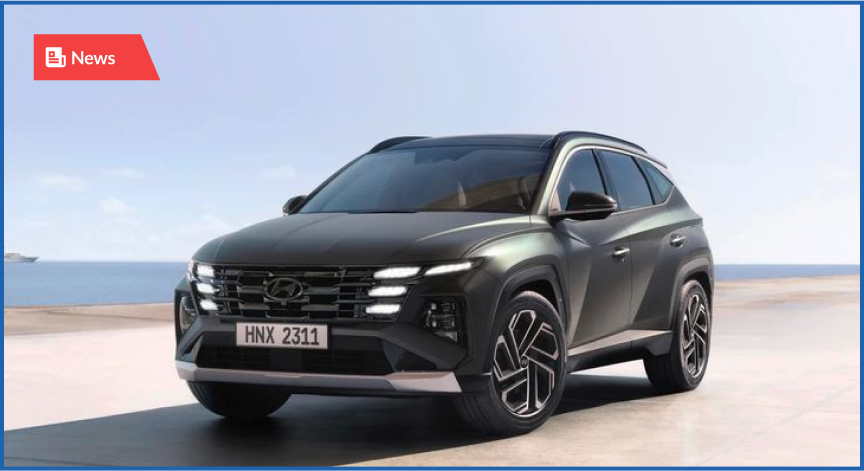- The facelifted Hyundai Tucson was spotted in Germany for the first time
- Prominent alterations can be seen inside the new Hyundai Tucson facelift
- Might continue with the current powertrain options
The latest Hyundai Tucson facelift has been unveiled for the European market. Even though the exterior design doesn’t have significant changes, there are some big updates for the premium midsize SUV, particularly from the inside. The vehicle will be launched in Europe in early 2024, and we can expect the updated model to be introduced by the end of 2024.
The exterior design of the Hyundai Tucson follows the “parametric dynamics” design language. The facelift features a redesigned grille with more defined detailing and discreet parametric jewel DRLs. LED headlights flank it, and there is a mildly revised bumper.
The side profile is pretty much the same, as there are no significant changes except for the alloy wheels, which seem fancier because of the updated diamond-cut design.
The rear profile has not been revealed yet, but Hyundai said the skid plate is integrated into the bumper and broader than before.
The most prominent alterations can be seen inside the new Hyundai Tucson facelift. The vehicle has a new dashboard featuring horizontal lines, a 12.3-inch digital cluster, and a 12.3-inch infotainment system.
Below the touch-screen infotainment system lies the sleek AC vents and the Korean marque that have brought back some physical controls for climate control and infotainment systems.
There is a new 3-spoke steering wheel with a round horn pad that seems sporty and retro simultaneously. The position of the gear has changed to the steering wheel column. It provides space in the center for a wireless smartphone charger and cup holder. The switchgear has also been updated, and it looks chic. It has a touch-sensitive button to control the HVAC.
Now, coming to the features, the majority of the details would be similar to existing Tucson, including Android Auto, wireless Apple CarPlay, a panoramic sunroof, a Bose sound system, powered front seats with ventilation, a powered tailgate and keyless entry with a push button.
As for safety, it offers ABS with EBD, a 360-degree camera, six airbags, electronic stability control, and ADAS.
Hyundai has not revealed the specifications for the engine, and the feature list is not official yet. We can expect some major changes for the 2025 Tucson. The existing models offer an array of fuel types and powertrains.
For example, the base engine is a 1.6L turbocharged hybrid unit that generates 226 hp while upgrading to the top-of-the-line PHEV ups that produce 261 hp.
Hyundai has not announced the official release date for their 2025 Tucson, but it is expected to be unveiled next year.
Hyundai Tucson and Subaru Forester have been rivals in the compact SUV segment for a long time. In the Hyundai Tucson vs. Subaru Forester game, Hyundai is winning in terms of style statement, technology, and features. Now, after the announcement of the 2024 Hyundai Tucson, Subaru will have to come up with something spectacular to stay in the game. What makes Hyundai a more appealing purchase is that budget-conscious people can look for cheap cars for sale in Tucson.
The price for Tucson ranges from $28,585 to $46,535, but the new launch is expected to have an increased price tag.
So, what are your thoughts about its new design, especially the new interior?

